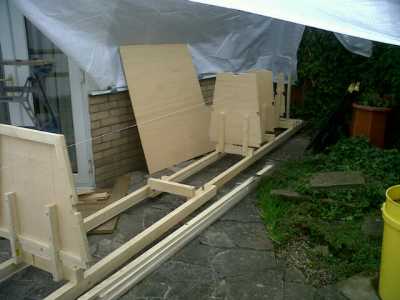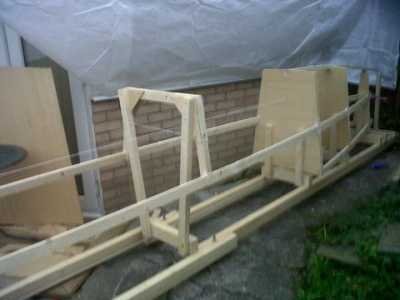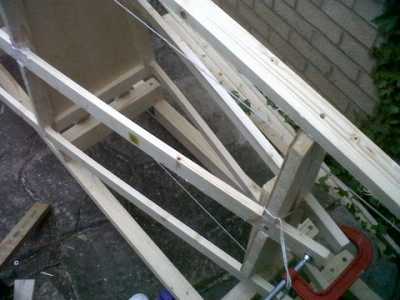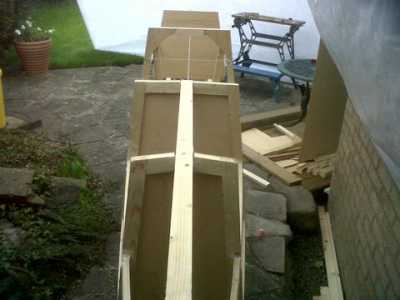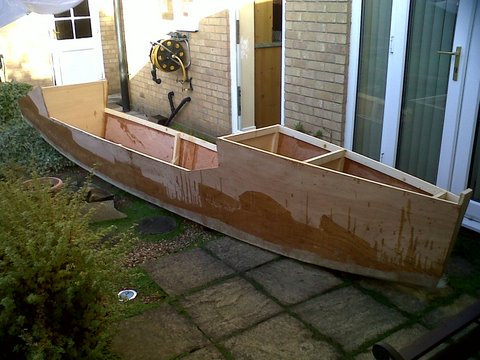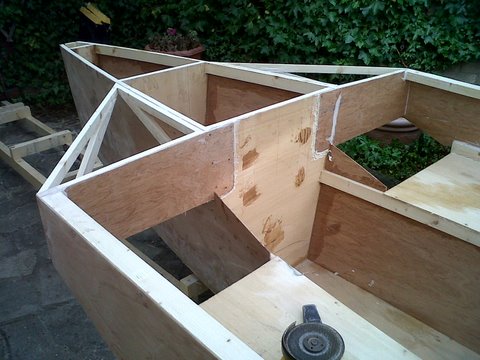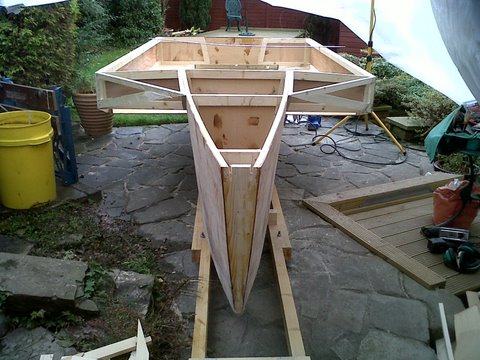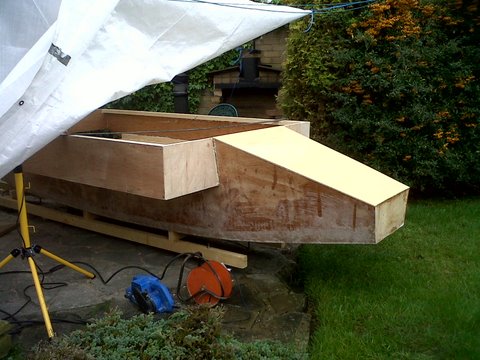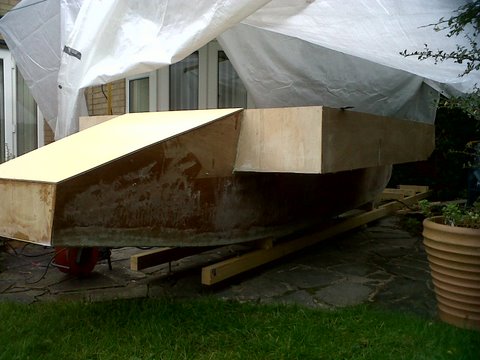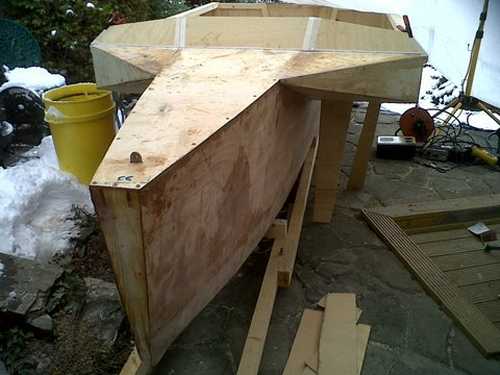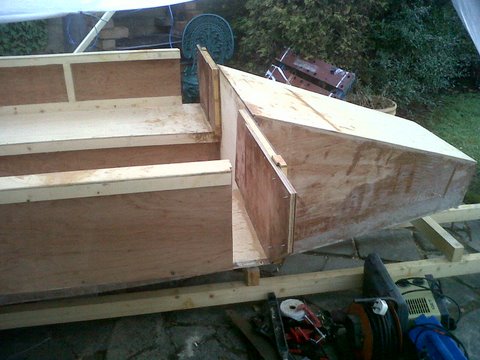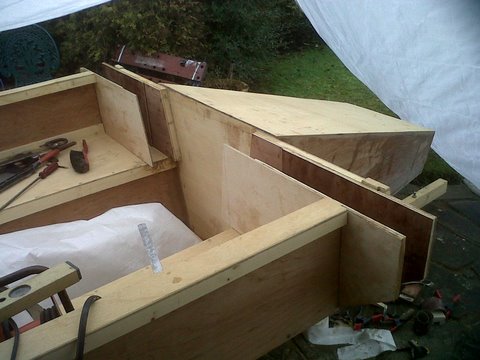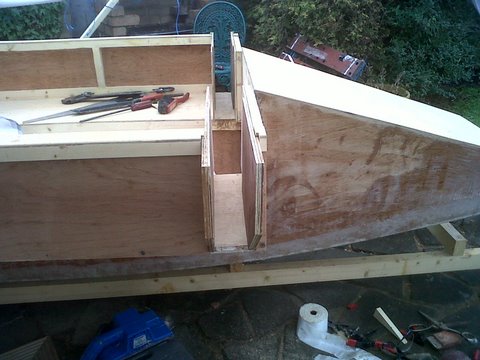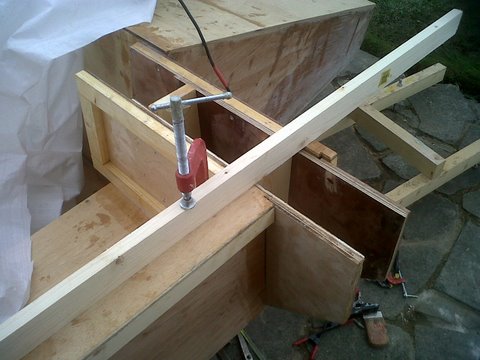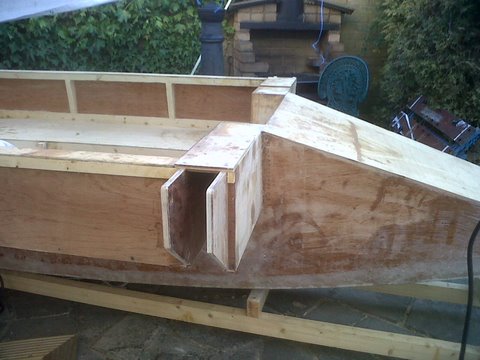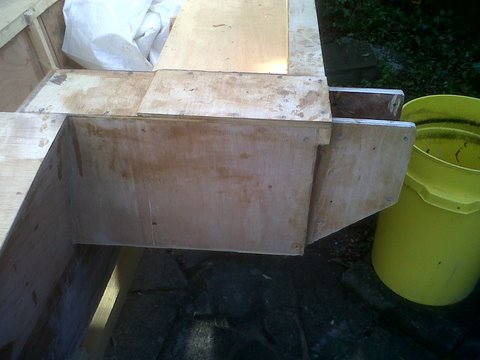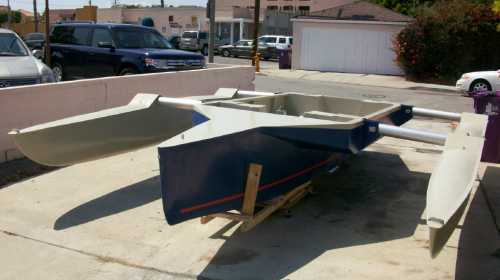About Woods Downloadable Plans
Click HERE to download Free Study Plans
Click HERE for plans for the main hull only - use your own outriggers
The Strike 16 is very easy to build with a stitch and glue hard chine hull and flat panel ply decks.
I suggest you also download the Strike 18 study plans as this has more drawings which will help you see the building sequence (even though a few details are obviously different)
THE FACTS AND FIGURES
LOA 4.75m
LWL 4.66m
BOA 3.67m
Sail Area (Q14)
Mainsail 9.5sqm
Jib 3.6sqm
Empty weight 175kgs
Loaded weight 380kgs
The Strike 16 is very easy to build with a ply/glass/epoxy hard chine hull and flat panel ply decks. It is a smaller version of the Strike 18, so it is worth checking that page as well, as there are more videos and comments there that will be useful while considering the Strike 16.
CLICK HERE for a study plan (in pdf format).
Even if you build the outriggers yourself (recommended) you can still use the rig, rudders, deck gear etc from a second hand beach cat. Either a 14ft beach cat, or even the rig from a 15-16 ft beach cat, if you normally sail in lightwinds, sheltered water conditions.
The photo above shows the completed boat with Pixie outriggers on it's first sail, and the ones below show it's build. It is being built outside in NE England by a home builder, the first few photos show progress made less than three weeks after receiving the building plans.
and then a couple of weeks later I got these
Snow doesn't stop this builder! Note: He has made a smaller windscreen than standard
In fact snow did stop him. As he wrote on New Years day: "Work has now resumed on my Strike 16 after a collapse of my temporary shelter due to 12 inches of snow overnight. (I needed to dig out the boat)"
But he then worked hard to make up for lost time, as these photos show (emailed to me Jan 8th)
I visited the builder just before launching when it looked like this with Pixie outriggers fitted
And here is a video on launch day
The following email and photos came from a US Strike 16 builder
"Hi Richard, here are some pictures of the Strike 16 I am building. The outriggers are from a 15 ft Sea Spray cat. I sailed this cat for 30 years, but as I got older (72 yrs) I found that it was too much work to sail it. Hiking out was getting to much work for this old body. I wanted a boat I could sit in with some speed and comfort. Your Strike 16 looked like the ticket. I should have it in the water in about 3 weeks.
I will let you know how it sails..ps I started building it in December and have enjoyed building it a lot. I am a average wood worker and the plans were great to work with. Mike from Southern California "
Another owner reported "I finally got my Strike 16 into the water last week. In summary, I expected it to not feel very nimble in comparison to the original SeaSpray cat, but it actually maneuvers quite nicely. I don't have the jib cleats yet so when sailing alone I can't use the jib but it still tacks which surprised me. Perhaps not super fast. My top speed this weekend was 8.4 mph, but I expect I will get higher with more consistent winds later this year. It works well for my family."
Note: this Strike is sailed on a mountain lake at 7000ft where the air pressure, and thus driving force, is less than at sea level. And look at how he trails it! Roads in the USA are wider and emptier than those in the UK!
Although it is a trimaran you still don't need much space to build a Strike 16, as this builder in Peru demonstrates
and then finished here (note, as on the Strike 15 and 18 the mast can be left up for storage)
And another Strike 16 nearing completion
This builder is making a removable windscreen, hence the polythene sheet. Note the ex-beachcat mast step
Comments from a Florida builder "Mr. Woods’ plans are very easy to follow and I it’s possible to build this boat in a side or backyard.
What do I like about this boat? I like having the ability to just buy a derelict Prindle catamaran, half buried in the beach, for next to nothing, then being able to just cut the amas in half and use all the equipment, including the rudder, for this new trimaran.
The ride on this boat is very, very dry. The main reason I built this trimaran was to take my wife out, as she does not like the wet ride of my proa, or the small catamaran I have.
The ride is fairly good. As with most trapezoidal designs, there is some slamming when the weather picks up and the waves get bigger and you are going upwind. On the plus side, the boat surfs very nicely. There is plenty of space for a weekend gear and provisions, and you could sleep inside of the boat if needed.
I have an outboard cradle, but haven’t used it yet … I do not have to as just paddling is very easy.
I think the best days on this boat are when we can take a bunch of people on board and it still sails decently. I have 3 kids, so although a little bit cramped, we have sailed with 5 people at a very decent speed.
Being a trailerable boat really opens up possibilities to explore all over Florida, on both coasts, and through all the Florida key chains and the Everglades Park.
Of course, this boat shines as a two person weekender. The only drawback all the people asking about the boat, which can slow you down when setting up the boat at the ramp."
============================================
Many small trimarans are basically kayaks with outriggers, and have the crew sitting in front of the helmsman. Production versions include the various Hobie and Windrider trimarans (disclaimer, I have sailed a Windrider but not a Hobie trimaran). This concept has several major disadvantages.
When you drive a car your passenger sits next to you, not behind you. It's more sociable that way and makes it easier to talk. Compare it to riding pillion on a motorbike which means all you really see is someones head, not the view. Often the passenger sits in front of helmsman, not only does that block his view but also it is the passenger who gets hit by spray, it's hard to duck out of the way when sitting in a fixed position. It is usually the passenger who is the reluctant sailor - very off putting, even for me, to be hit in the face by cold water! Again check the owners comments about how dry the Strike 16 and 18 are to sail.
And that is another thing I don't like. I find it nice to walk round the boat, and with a bad back I cannot sit still for hours. Sitting in the hull gives you a great impression of speed, because you are so close to the water (but its also very wet, as I just said). Sitting high on the trampoline feels like flying and you get a good view of approaching waves and wind gusts.
But boats are not just for sailing! You also have to get on and off it. That may well mean coming into a dock or pontoon. Doing this on a small trimaran is tricky at the best of times, because you cannot get to the outrigger bow to fend off or jump ashore. So, on a boat where you are trapped in the central hull, you will have to be very skilled to avoid bumping the dock especially if you come alongside under sail..
It's not much better if you have an engine, for it will be very difficult to start and control when you are sitting facing forwards and the engine is behind you.
Many of those boats are steered with your feet. One argument for that approach is that you have both hands free to drink or smoke. That doesn't stop anyone I know from doing that when driving a car! and has never stopped me when holding a tiller.
My hands are much more sensitive than my feet. People don't usually play a piano or paint with their feet! Furthermore the more joints/wires between rudder and tiller the more friction and slackness. So the steering feels heavy and sloppy.
===================================================
The Strike built in Peru, see above, was launched at Easter 2015. The owners reported "OK, here is a photo on our first sail with very light winds, but the boat still moved along well with three of us aboard under the original main and new larger genoa (Total area about 13 sq.m.). Steering is very light and Fernanda (10) had no trouble taking the helm. Tacking was effortless, and we are very pleased with the boat. We look forward to sailing when it is a bit windier."
The photos, below, are of another UK built Strike 16
Strike 16 Materials List
6mm gaboon ply (8ft x 4ft sheets) 5 sheets
4mm gaboon ply (8ft x 4ft sheets) 4 sheets2in x 1in 10m
11/2in x 1in 40m
1in x 1in 15m
5in x 1in 1m or laminate from 2in x 1in
3in x 2in kingpost 1m
4in x 1in 4m
Epoxy resin 10kgs min 200g glass cloth 2kgs min
Screws 3/4in counter sunk stainless steel 1000 (or use barbed ring nails)
Filler etc as required
Scrap timber for frameNo allowance for waste. Timber sizes nominal planed all round (PAR) use softwood, eg Douglas, fir, Sitka spruce etc





